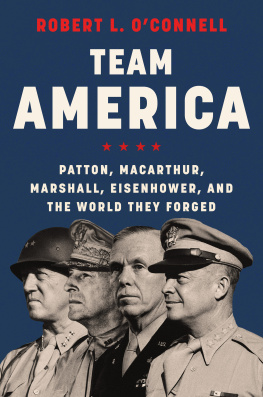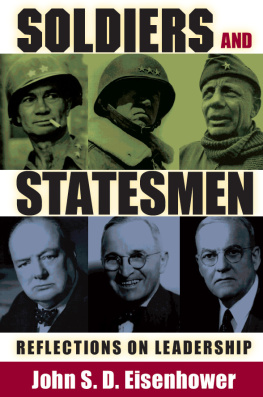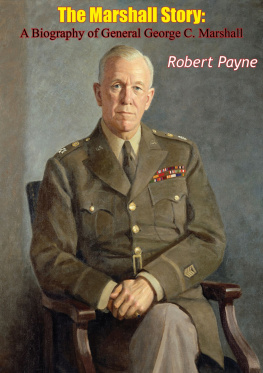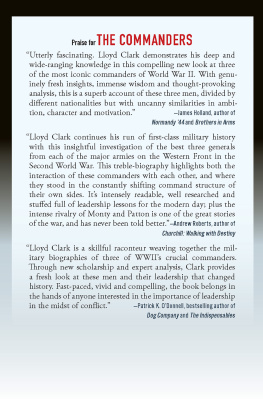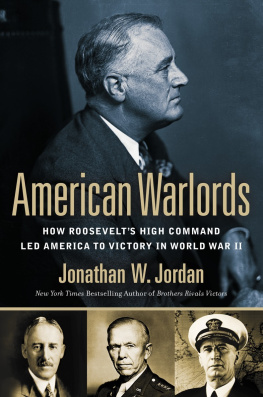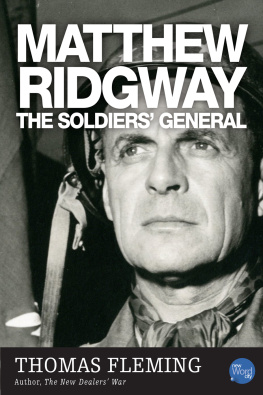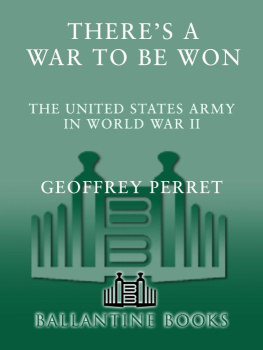Contents
Guide
Of Arms and Men: A History of War, Weapons, and Aggression
Sacred Vessels: The Cult of the Battleship and the Rise of the US Navy
Ride of the Second Horseman: The Birth and Death of War
Soul of the Sword: An Illustrated History of Weaponry and Warfare from Prehistory to the Present
Fast Eddie: A Novel in Many Voices
The Ghosts of Cannae: Hannibal and the Darkest Hour of the Roman Republic
Fierce Patriot: The Tangled Lives of William Tecumseh Sherman
Revolutionary: George Washington at War
TEAM AMERICA . Copyright 2022 by Robert L. OConnell. All rights reserved under International and Pan-American Copyright Conventions. By payment of the required fees, you have been granted the nonexclusive, nontransferable right to access and read the text of this e-book on-screen. No part of this text may be reproduced, transmitted, downloaded, decompiled, reverse-engineered, or stored in or introduced into any information storage and retrieval system, in any form or by any means, whether electronic or mechanical, now known or hereafter invented, without the express written permission of HarperCollins e-books.
FIRST EDITION
Cover design by Joanne ONeill
Cover photographs Popperfoto/Getty Images (Patton, Eisenhower); Pictorial Press Ltd/Alamy Stock Photo (MacArthur); Bettmann/Getty Images (Marshall)
Digital Edition MAY 2022 ISBN: 978-0-06-288332-2
Version 04062022
Print ISBN: 978-0-06-288329-2
Joe Kett, Jim Sterling, Peter Kracht, Gordon McCormick, and Jonathan Jaofive gentlemen who changed my life. Thanks.
Ill go through [those Germans] like crap through a goose.
George Patton
Young man, that bullet was not meant for me.
Douglas MacArthur
I save my emotions for Mrs. Marshall.
George Marshall
Make that 75 percent cold-blooded.
Dwight Eisenhowers son John, when asked to balance his fathers open and sunny side and his calculating nature
America f**k yeah!
The cheer of the plush puppet U.S. special operators in the film Team America, after clearing Paris of terrorists, and in the process knocking down the Eiffel Tower
Contents
There was once a real Team America, a military-industrial colossus engaged successively in what amounted to two World Series of Warfare (a third was suspended indefinitely due to the prospect of mutual annihilation).
Our country had many assets in these struggles, but among the most important was extraordinary military leadership, which got better and better until Team America forged a true murderers rowGeorge Patton, Douglas MacArthur, George Marshall, and Dwight Eisenhowera string of warrior superstars unprecedented in military history. Probably, if they were in a position to do so, Caesar and Napolon would point to themselves and their stellar henchmen and vociferously disagree. But in terms of the sheer magnitude of what they attempted and accomplished at such a critical point in human historythe transition from total warfare to strategic permafrostits pretty clear that the shadows cast by former lineups cant match the achievements of Team America, particularly these four superstars and the savvy managers who engaged them around the world.
Plainly, all of this requires further explanation. The idea of consistently comparing the struggles of the twentieth century to a series of gigantic sporting events might strike some as absurd, even obscene.
But as with any such artifice, it depends on how you look at it. For example, the matter of scale: On the one hand, the armies we will be considering numbered in the millions, which is inherently confusing, especially combined with military terminology unfamiliar to most. On the other, sports teams numbering in double digits more accurately approximate the scale in which key decisions are actually made in time of war, as does the push and pull of willful superstar athletes held in check and directed by managers with a larger view.
Yet sports are not about killing, or at least havent been since the Romans. This book is all about excessive killing, how that came to pass, and what our four superstars did about it. So the analogy works only if you are willing to embrace another analogy, that of the big leagues in hell. Here in the infernal majors the score is kept mainlythough inaccurately, since everybody cheatsthrough body counts. Combat is often one-on-one, but ganging up is always encouraged. As we shall see, Alliance intersquad scrimmages produced some of Team Americas most impressive wins courtesy of George Marshall and Dwight Eisenhower. In literal terms at least, these were bloodless victories, but they were made in the context of the constantly gorier, corpse-littered environment of World War II. The game our four protagonists had devoted their lives to getting good at was getting worse and worse. Fortunately, as befit the hellish locale, the game itself was doomed, destined to be replaced by something even worsemuch worse, actuallybut paradoxically much better. If hell could have a silver lining, this was it.
The fact was that Western societies and ultimately the rest of the world had blundered into a logical trap so simple yet so self-reinforcing that it amounted to a feedback loop for warfare intensification, a demonic treadmill of destructiveness always accelerating and with no apparent way to get off.
It began during the early stages of the French Revolution, when it was discovered that ordinary citizens, hastily assembled, armed, and trained, could make up for their military shortcomings with sheer enthusiasm and, in doing so, overcome the dispirited professionals of the ancient regime. This began with volunteers, but soon it was learned that the proposition basically held for those compelled to serve, so long as revolutionary fervor held and, later, Napolon was around to lead them. Prior to this, armies had been very expensive and time-consuming to build and maintain. Now very suddenly the way was open for legions in the millions.
The second jaw of the trap was formed and sprung during the American Civil War. In this case it came in three formsthe telegraph, trains to transport troops, and rifled small arms with triple the accurate range of their predecessors. All were important, though not necessarily decisive, but it was their larger lesson that mattered: technology must be relentlessly applied to the means of warfare. The results would prove appropriate and effective.
When put in the hands of armies of ordinary citizens, those new means of warfare led to a series of ever-intensified bloodbaths, wars of such magnitude that they shook otherwise successful societies to their very foundations. Total war, periodic societal spasms during which everything was devoted to destruction, was the outcome of this simple but lethal proposition. Around one hundred million died prematurely during the first half of the twentieth century, caught in this perfect trap. Then without warning the grand mechanism self-destructed by creating something much more terrible but, in the end, far safer. Yet, at the time, who knew?
BY ANY MEASURE, FOR CIVILIAN OR SOLDIER, THIS WAS TOUGH GROUND TO have crossed. Yet our four protagonists not only successfully traversed the first, truly uncharted part of the Cold War, they also directed the rest of us toward safety. They were far from perfect human beings, but they did basically represent the values of their countrymen in some very tough circumstances. All four exhibited remarkable adaptability, which was exactly what tumultuous times demanded, but they never lost their basic respect for human life in an environment devoted to slaughter. They played in a very rough league, yet they never truly disgraced themselves, or usnot even George Patton.

